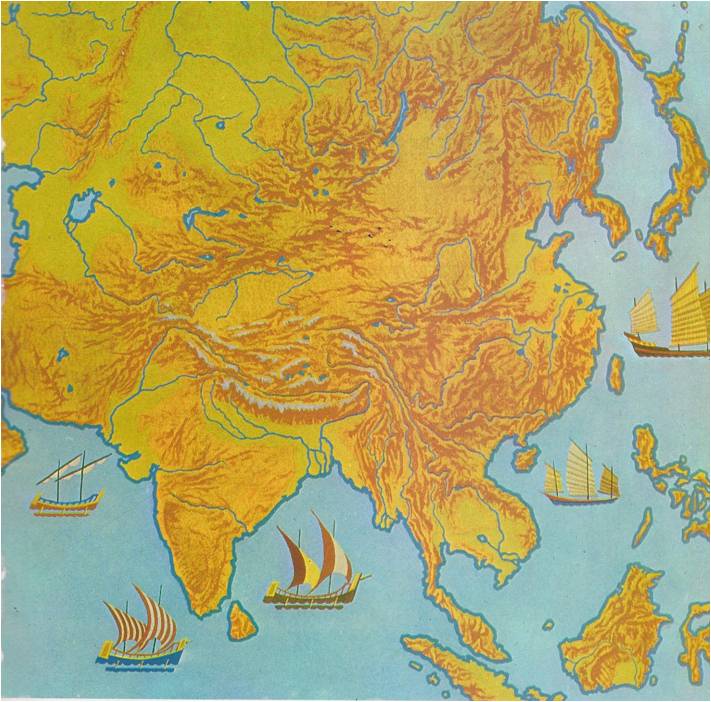UNTIL 1947, when the Moslem state of Pakistan was carved out of its western and eastern corners, the entire triangle of land that points south from the Himalaya Mountains into the Indian Ocean was known as India. Geographers call this huge land mass a subcontinent, because it is almost completely cut off from the rest of the continent of Asia. The Himalayas on its northern frontier form a continuous barrier of rock, the highest in the world. “MOTHER GANGES” From the southern slopes of the Himalayas, two great rivers run down to the ocean. The valley of the Indus River, on the west, is mainly desert; overlooking it are the only breaks in the Himalayan wall, the Khyber Pass and the Bolan Pass. The valley of the Ganges River, on the east, is a broad, fertile plain. Indians consider this river holy and call it “Mother Ganges.” Together, the Indus and Ganges Valleys make up North India. South of the Ganges Plain rise the Vindhya Mountains. To the south stretches a very large region of hilly uplands, called the Deccan. At its western and eastern edges the Deccan drops suddenly to coastal plains, forming long mountain walls called Ghats. The Vindhyas, the Deccan, the Ghats and the strips of lowland along the coasts make up South India. INVADERS FROM THE NORTH Geography influences history. This is particularly true of India — so much so, in fact, that North and South India have really had two separate histories. From earliest times, the people in both parts of the country were mostly poor farmers, living in villages. They shared the beliefs of the Hindu religion. Hinduism taught them that life was only a dream, they paid little attention, north or south, to the events that took place in their lifetimes. Otherwise, however, …
Read More »The Holy Book of Allah A. D. 632-732
Mohammed sometimes dictated his thoughts to his secretary, Zayd, but when he spoke in public no one wrote down what he said. Instead, his listeners learned his speeches by heart and mistakes crept in, as they usually do. Only a short time after Mohammed’s death people were repeating his sayings in quite different ways. If Mohammed had been anyone else, this would not really have mattered. It would have been enough to remember what he had said without bothering too much about how he had said it. But the Moslems believed that God himself had addressed them through Mohammed. Every word the prophet had spoken was therefore divine and even every pause between words. The more the different reports of his teachings multiplied, the more confused his followers became. THE KORAN Mohammed’s old companions soon realized that if this confusion Were allowed to go on, Islam could easily split up into quarreling groups. Eventually, either Abu Bakr or a later head of the movement, Othman, ordered Zayd to prepare a text of Mohammed’s teachings that would be correct and complete. Gathering written and remembered fragments of his master’s words “from the ribs of palm-leaves and tablets of white stone and from the hearts of men,” Zayd brought them all together in a book. This book afterwards came to be called the Koran, meaning “the reading aloud” in Arabic. To Moslems, its contents are the very word of Allah. Four-fifths the size of the New Testament, the Koran is made up of 114 suras, or chapters. These suras are not arranged in the order in which Mohammed first spoke them, but by length, beginning with the longest. Most of them, short and fiery, came to Mohammed during his early years of struggle in Mecca. They deal with such things as the …
Read More »

